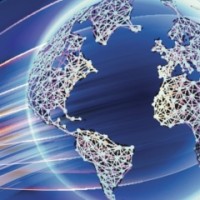Telefónica Public Policy & Telefónica España Regulatory teams
 Some already predict that the number of around five billion Internet capable devices globally in 2010, will rise to over 20 billion Internet capable devices by 2020. Or even up to 50 billion as recently stated in a videomessage by Neelie Kroes, Vice President of the European Commission in which she also pointed out that: “the shift from an Internet of People to an Internet of things will create unprecedented market opportunities.”
Some already predict that the number of around five billion Internet capable devices globally in 2010, will rise to over 20 billion Internet capable devices by 2020. Or even up to 50 billion as recently stated in a videomessage by Neelie Kroes, Vice President of the European Commission in which she also pointed out that: “the shift from an Internet of People to an Internet of things will create unprecedented market opportunities.”
Not all of these devices are “connected” full time today, but the purpose of the list below is to highlight some opportunities for research and new business models associated with the “things” or machines, irrespective of the form of connectivity. It is not meant to be a complete directory but illustrative of emerging devices or machines most of which are not traditionally thought of as “connected”.
Examples of Connected Machines
- Automotive: Trucks/cars/motorbikes/tractors or leading to “Internet on wheels” and a wide range of connected services
- Consumer devices/media platforms: TV/PCs or tablets/games consoles/ Entertainment centres/Music players/Cameras all for media downloads/uploads
- Industrial: Lifts/Industrial machines/Air conditioning/Fuel pumps
- Street furniture: Lighting/Traffic lights/Motorway signs/Parking meters/Toll technology/Digital signs
- Environmental systems: Water sprinkler/Weather stations/Pollution monitors/Pollen Gauges
- Building and security systems: Industrial meters/Building sensors/Security alarms/Security cameras or connected CCTV
- Home/energy management: Smart metering and smart grid/Fall alarms/Lighting controls/Home sensors/Water meters
- Healthcare (see BBC Video on MHealth developed by Telefónica) and wellness: Weighing scales/Sports watches and belts/Home alarms/Blood pressure monitor/Glucometer/Cardiac monitors
- Domestic equipment: Boilers/Cookers/Fridges/Lawnmowers
- Miscellaneous: Anti-theft devices/Security/Pet trackers
Please also see the Bluetooth directory which by the end of Aug 2010 had close to 11,600 products listed.
What are the drivers of new business models?
- Differentiation through new means of delivery/ support
- Remote maintenance and software/configuration updates
- Cost reduction and controls.
- Energy management and climate change, often including Smart Home design thinking.
- Public policy led – e.g. Smart cities (e.g. SmartSantander by Telefónica I&D), Smarter Transport and ITS
- Access to precious skills and support – e.g. connected healthcare/wellness
- Relationship change between manufacturer and customer – service led not retail led
- New Internet based business models
The growing interest in the “Internet of things” is based on mobile cellular access, WiFi, short range radio and other forms of broadband connectivity. However, the shift from voice to data often masks the importance of new business models, and the machines than can now be connected. The question is now no longer “how to connect” but “what to connect” with the Internet? And then what services could be offered.
This will become a growing part of Digital Europe, Smart cities and new research programmes.
 Dr. Mike Short, Vice President, Telefónica Europe
Dr. Mike Short, Vice President, Telefónica Europe
Other interesting information:
Telefónica, leader in green services in Europe
Neelie Kroes on “Governing the Internet of Things”








